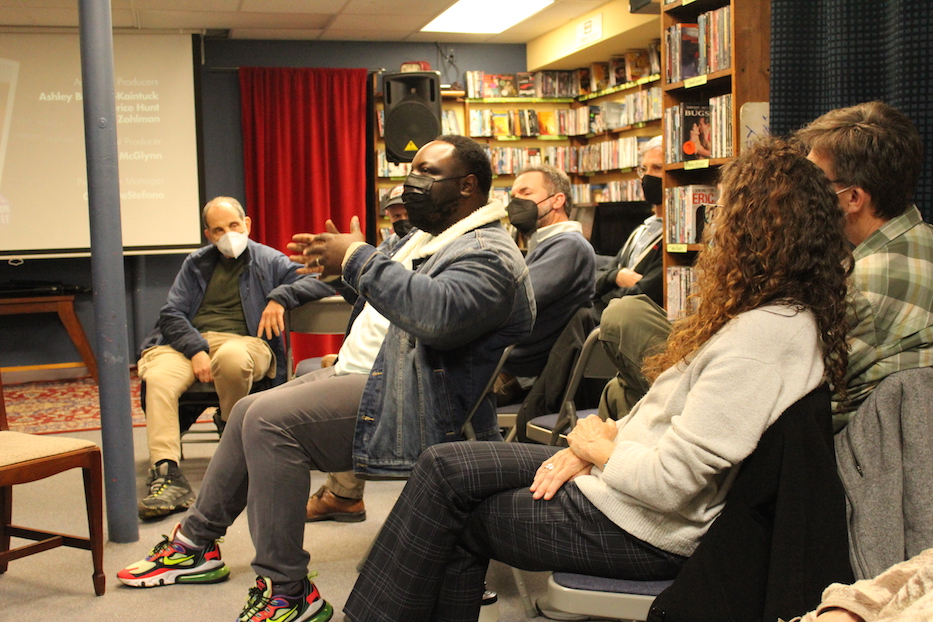
Best Video Film & Cultural Center | CT Humanities | Hamden | Arts & Culture
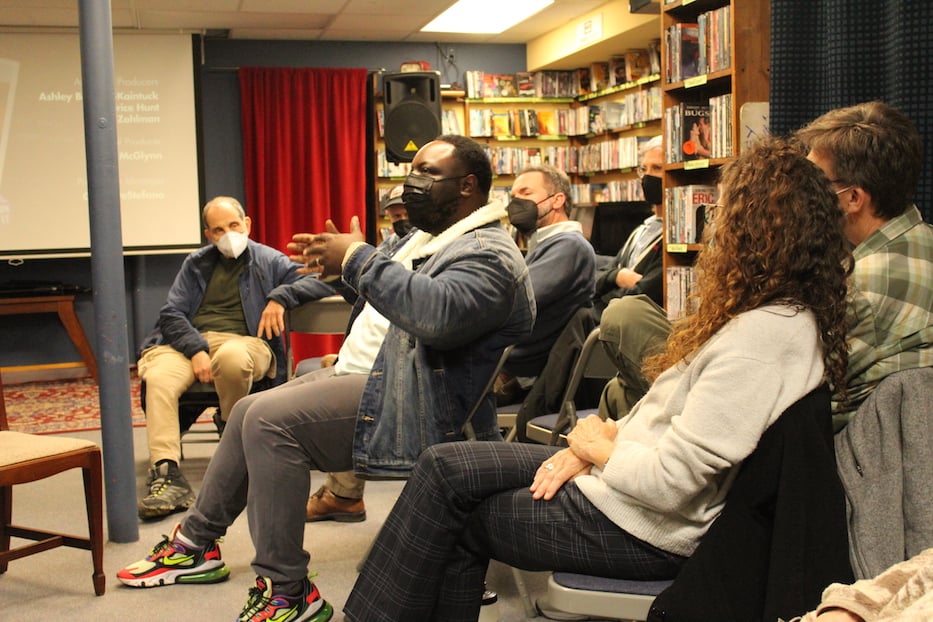
Paul Bryant Hudson moderating a post-film talkback. Al Larriva-Latt Photos.
Draped in a marigold-yellow African print with a towering crown of hair atop her head, the High Priestess of Soul Nina Simone took the stage in Mount Morris Park. Behind her stood a band of instrumentalists, beating and shaking congas, maracas, tambourine, and cowbell. To the thousands of people assembled on the lawn, Simone launched into speech.
“Are you ready to do what is necessary? Are you ready Black man? Black woman, are you ready, ready, ready, ready? Are you ready to kill if necessary, keep your mind ready? Are you ready to smash white things? Are you ready?”
“Are you ready to listen to all the beautiful Black voices? The beautiful Black feeling? The beautiful Black waves moving in beautiful air? Are you ready to love Black? Always loving Black? Are you ready Black people? Are you ready?”
Simone makes that declaration in Questlove’s Summer of Soul (Or… When the Revolution Could Not Be Televised), which arrived in Hamden Tuesday night courtesy of Best Video Film and Cultural Center. Just over 30 people gathered for the film, the first installment of the center’s “Spring into Music” series.
It came hot on the tail of the film’s winning Academy Award for Best Documentary Feature last Sunday. The next film in the series is Jazz On a Summer’s Day, scheduled for April 12 with an introduction and post-screening discussion with New Haven-based jazz saxophonist and educator Herb Wilson.
The musician and organizer Paul Bryant Hudson moderated the talkback that followed the screening. With the exception of Hudson and two others, the crowd was all white. Many attendees were over the age of 50.
“Spring Into Music” grew out of a desire to bring the community back together through the arts, as Best Video has with its outdoor stage, recently-returned indoor concerts, and film screenings earlier this year. Last fall, outgoing Executive Director Hank Hoffman was able to secure a grant from Connecticut Humanities and additional support from insurance company Greenberg Rhein & Margolis Inc. It went towards securing film screening licenses and paying moderators an honorarium.
For Hoffman, it's also personal. Ever since the Beatles stormed into the United States in 1968, when he was eight years old, music has been one of his key sources of happiness. For the past three decades, he has played guitar and sang for his four-piece psychedelic rock group Happy Ending.
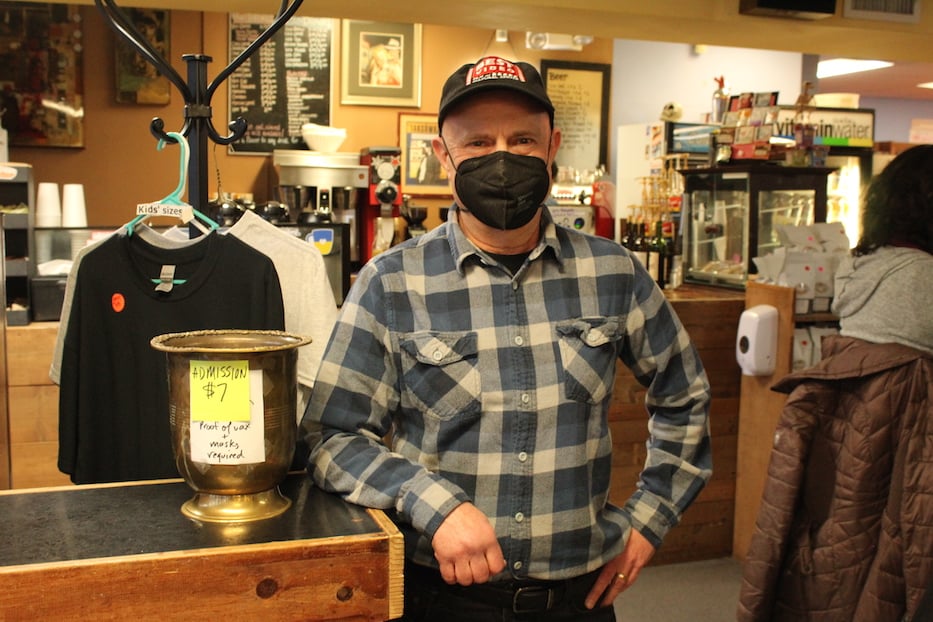
BVFCC outgoing Executive Director Hank Hoffman.
He added that the intention behind Spring into Music was to bring the life-affirming power of the art form into the lives of the attendees. It also was to spark critical thought.
“We like for there to be discussion and context for the screenings,” he said. “It’s not just entertaining but also educational. I wanted to choose ones that might spur some conversations.”
Tuesday, the event became an opportunity for attendees, many of whom had lived through the events on film, to reflect on the fundamental role of Black culture in their lives–and their positionality as white consumers of it.
Summer of Soul tells the story of a magnetic summer, the people who made it happen, and how it got erased it from (and ultimately reintroduced to) popular memory. In 1969, the lounge singer and promoter Tony Lawrence organized a series of Sunday afternoon concerts in the Mount Morris Park. He worked with a shoestring budget, sponsored initially by Maxwell House Coffee and the New York City Parks Department.
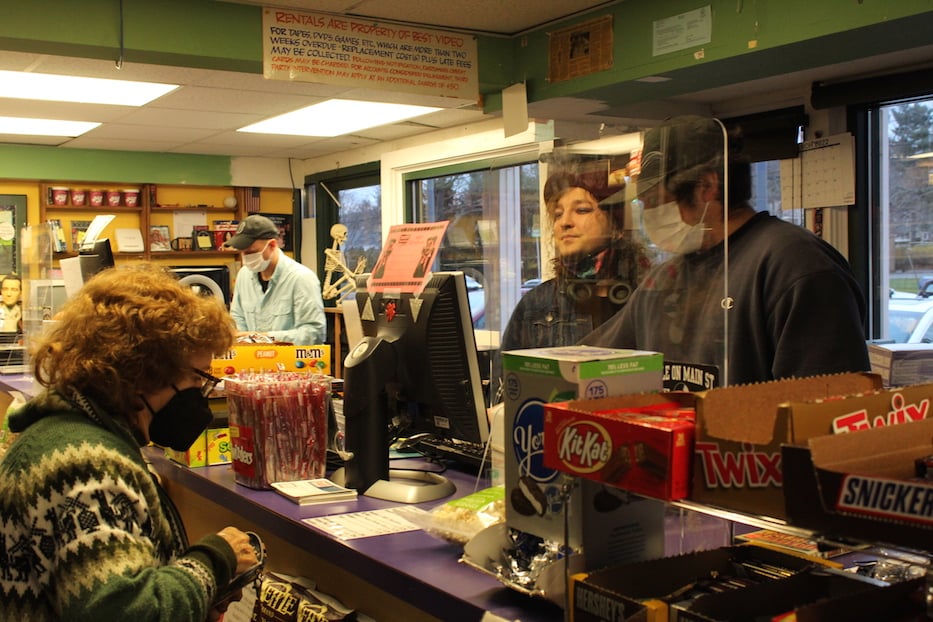
The series was dubbed “The Harlem Cultural Festival.” A savvy organizer, Lawrence leveraged the partial-commitments of various musical groups to assemble a lineup of soul, psychedelic rock, funk, gospel, and blues superstars. Sly & the Family Stone, Stevie Wonder, the 5th Dimension, Mahalia Jackson, and Nina Simone all performed.
It was a watershed moment event—the Black Woodstock, some called it. Yet 50 years later, the 40-hour-long treasure trove of footage, meticulously filmed by the TV producer Hal Tuchin, lay disregarded in a basement.
Summer of Soul brought it to light. Hudson called director Ahmir “Questlove” Thompson “one of the most credible music historians of his generation.”
As a festival film, Summer of Soul showcases extended footage of the festival’s main acts. As a cultural and political history, the film argues for the ways the festival’s musicians not only interacted with, but helped to produce the Black-centered politics.
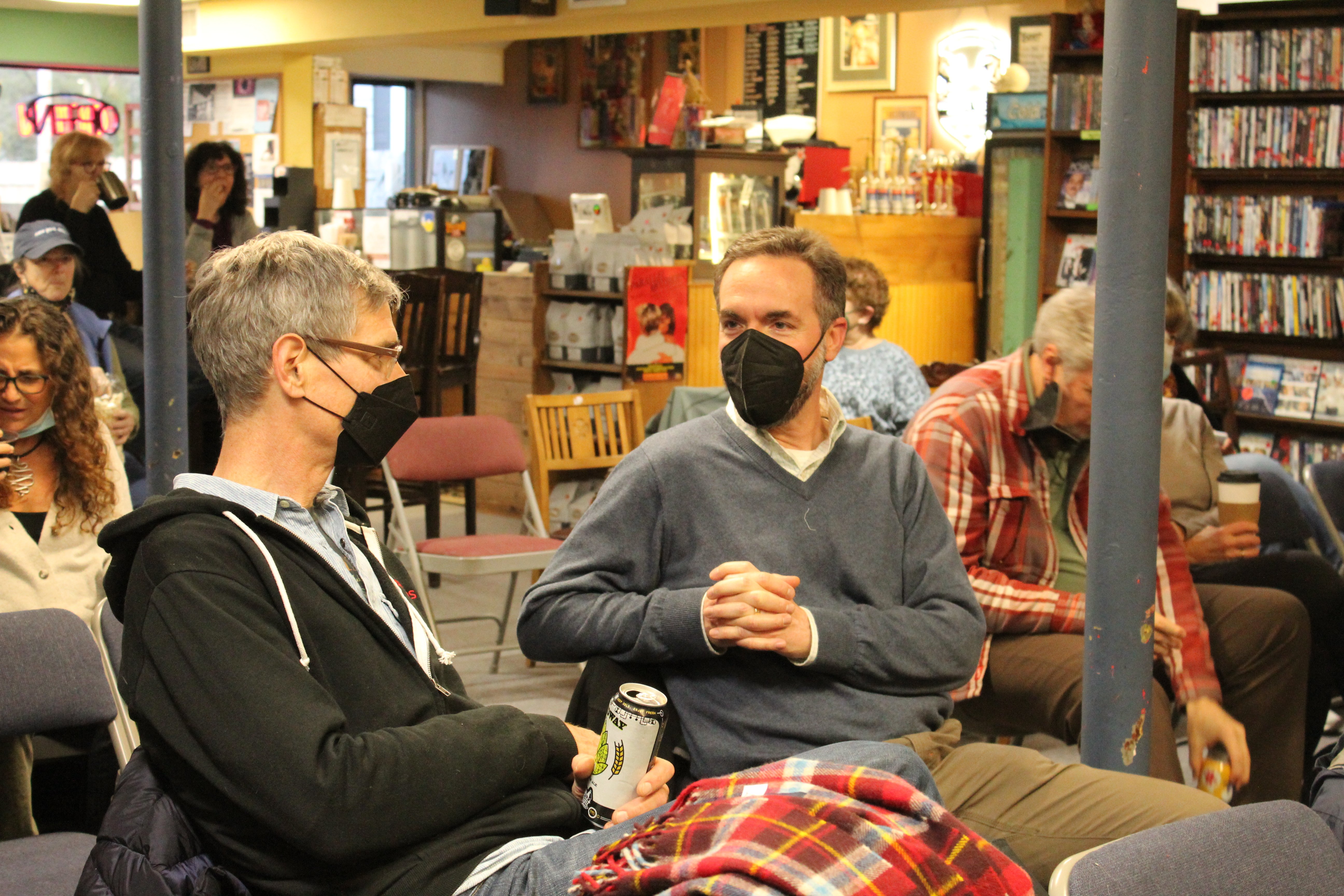
Weaving in festival footage with news and media footage of civil rights demonstrations and police violence, the film contextualizes the watershed year 1969.
As the festival wound through the summer months, the Vietnam War, the anti-apartheid movement, and the moon landing were also unfolding. Festival attendees were reeling from the assassinations of John F. Kennedy, Dr. Martin Luther King, Jr., and Malcolm X—the last of which occurred in Harlem.
These events were in sync with—and represented in—the festival’s music. “An artist’s duty is to reflect the times,” Simone says in the film.
Hudson watched the film on his iPad while his children slept next to him. He was electrified, later characterizing it as a spiritual experience.
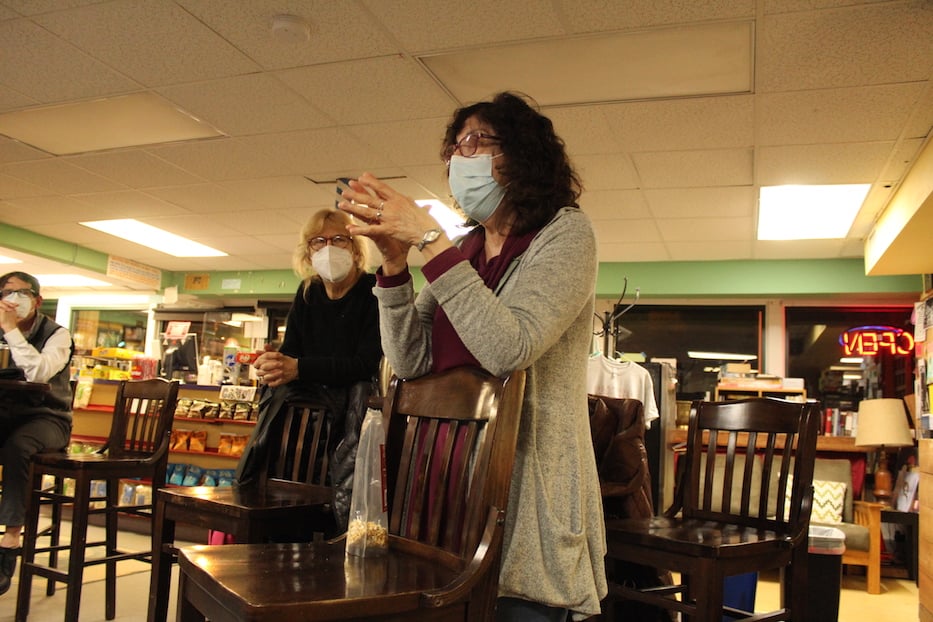
Attendee Anne Marie Menta.
“It sat really square at all my intersections. Culturally, right,” Hudson said. “My Blackness, my creative spirit, my creative identity, my proximity to this place (I grew up in New Haven), my understanding of life and family and legacy.”
Born and raised in New Haven, Hudson is singer-songwriter, musician, and composer. His single, the thematically rich “John,” reflects on the legacy of the Black folk hero John Henry, a steel driver whose labor helped connect the railroad from Virginia to Ohio. In 2020, his work set the soundtrack to the 50-year anniversary of May Day and the Black Panther trials in New Haven. Click here to read more about Hudson’s work in a profile Hoffman wrote in 2017.
Acknowledging the whiteness of the room, Hudson encouraged the attendees to share their impressions of the film from where they stood as white people.
Many of the attendees were emotionally taken by the film, sharing the beloved role the music and musicians in it played in their young lives.
For Lisa Hamm, the film transported her to the musical groups she’d grown up with. And yet she was astounded—how could she have lived so close to the festival and never heard of it?
%20right.%20Playing%20a%20word%20game%20before%20the%20screening.jpg?width=933&name=Brad%20Czepiel%20left%20next%20to%20wife%20(declined%20to%20give%20name)%20right.%20Playing%20a%20word%20game%20before%20the%20screening.jpg)
"I grew up in New York. I was in New York at that time. I grew up in the Bronx. I don’t know how I didn’t hear about this at all,” she said. “ I grew up in the Bronx, and I went to Woodstock. I saw Sly in Woodstock. But I didn’t know anything about this. I just can’t believe it. I’m just stunned. How is that possible?”.
It was a reaction due, in part, to the erasure of Black history and to the profound segregation at play in New York City.
Another attendee grappled with having grown up in New York City but never venturing into Harlem.
That sense of segregation was on display in the film, but also in Best Video’s location in a historically redlined town of Hamden.
Mixed with that astonishment was a deep sense of discouragement and fatigue across the attendees—a sense that despite the momentum of the 1960, not much has changed.
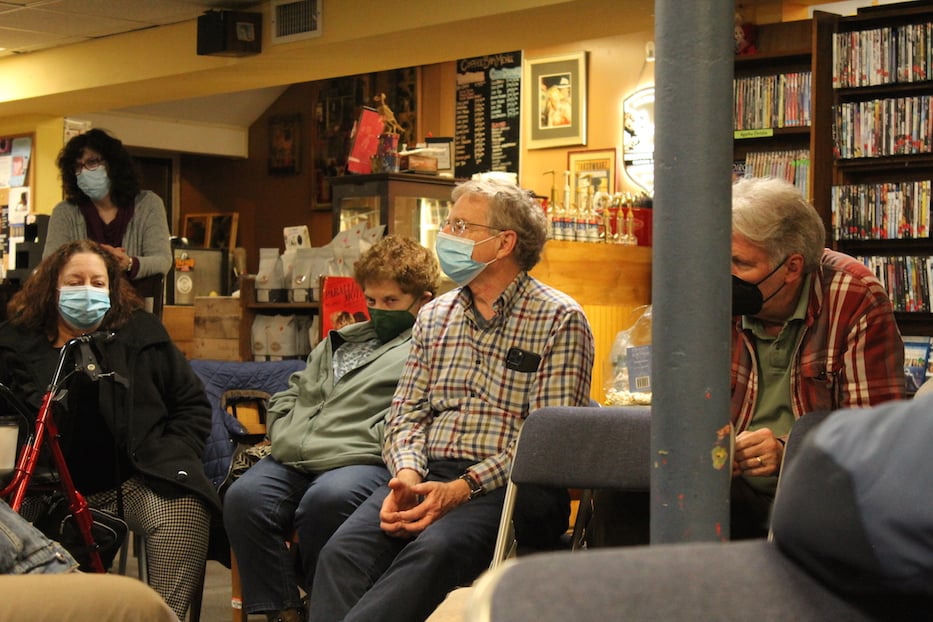
Hudson cautioned the attendees against the pessimistic interpretations of the film. Progress isn’t linear, he emphasized. Instead, Hudson redirected the attendees’ attention toward the political power the musicians harnessed in 1960.
“More so than I see it as a failure or a regression, I see it as a really clear depiction of what Black culture is actually made of,” he said. “And an even more clear picture of what white supremacist violence in our country is made of and how it always has been [there].”
Hudson encouraged the attendees to think about the power they hold as white people.
“So much of the transformation that awaits us lies in the consciousness of white folks. I think that we’re seeing that awakening now, and I think generation after generation will continue to kind of see that festering,” Hudson said. “I think that’s what that is. So much of the power lies in the idea of whiteness—in the economic sense, in the social sense, in the political sense. As the perspective shifts, the power shifts.”
Learn more about the "Spring Into Music" film series at Best Video Film and Cultural Center here. The series returns April 12 with Jazz On a Summer’s Day. An introduction to and discussion after the film will be moderated by New Haven-based jazz saxophonist and educator Herb Wilson.

